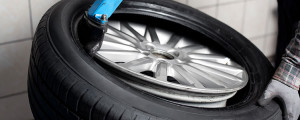When you own a vehicle, you will want to keep it in the best condition possible. Always make sure you bring it in for regularly scheduled inspections. This way we can look at the parts and components to ensure they are working properly. There are also a lot of other smaller things to consider when it comes down to having your vehicle run right or not run at all. This includes the fluids and oil of the vehicle. Without adequate fluids in all of the appropriate places in your vehicle, you will not have a running engine to get anywhere. That is why it is important to have regular fluids checks on your vehicle every few months.
The Fluids that Should be Inspected
There are several fluids that run through your vehicle to ensure it operates properly. There is the oil, which is probably the most common fluid you think of besides the gas that runs the engine. Then there is the windshield wiper fluid that keeps the windshield clean and free of bugs. Some of the other fluids that are still important but less talked about include the antifreeze, which is also called the coolant, power steering fluid, brake fluid and transmission fluid. Depending on the vehicle you have, there might even be more fluids to check, such as if you had a special suspension system for four wheel drive vehicles or a hybrid engine. The owner’s manual will describe any and all of the fluid types in your vehicle and how often you should have them checked and changed to run safely.
Check the Fluids Regularly
There is a little bit of room when it comes to checking out the fluids and when to have new fluids added. When you have a maintenance check or are getting the oil changed is when you should have the other fluids checked too. Obviously the oil will be handled, but it only takes a few minutes for the technician to go through and grab samples of the other fluids in the car. If the levels are low, then they can add more. If the fluid looks dirty, then it might be time for a flush and to get some new fluid in its place. Transmission fluid gets dirty and is recommended to be changed after 100,000 miles or so, depending on the make and model of car you drive. Brake fluid can also seep out, which could cause the brakes to fail.
Signs the Fluid Levels are Low
This is something that you really do not want to find out on your own. The truth is, you might not even know you are completely out of a fluid until it is too late. The windshield wiper fluid will have a sensor to detect when it is low and alert you on the dashboard. However, there is not a sensor in most vehicles when the power steering fluid or the brake fluid has seeped out. That is why it is important to bring the vehicle in for proper inspections.
